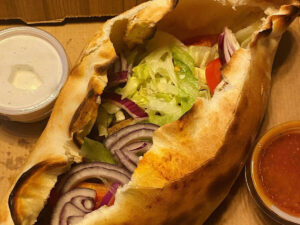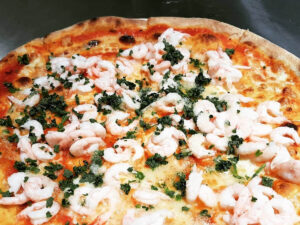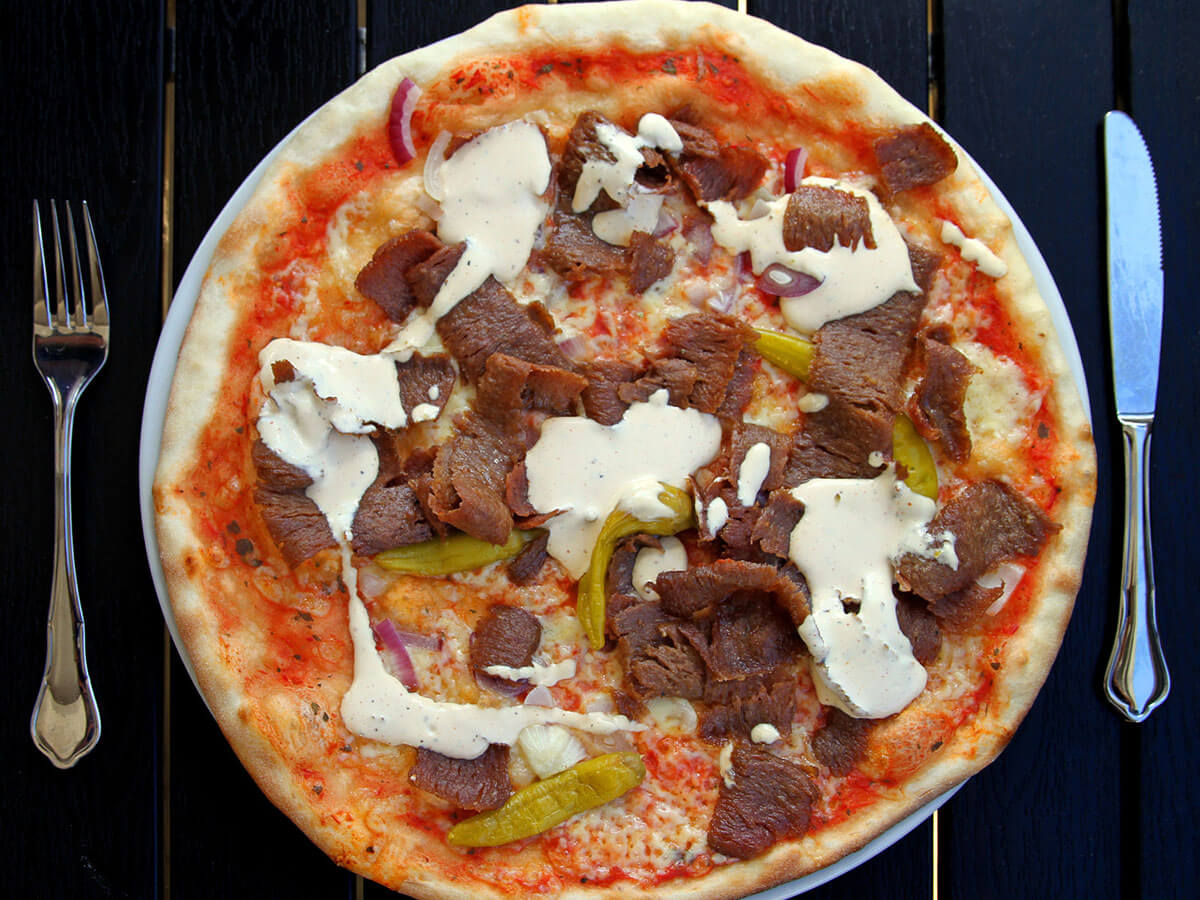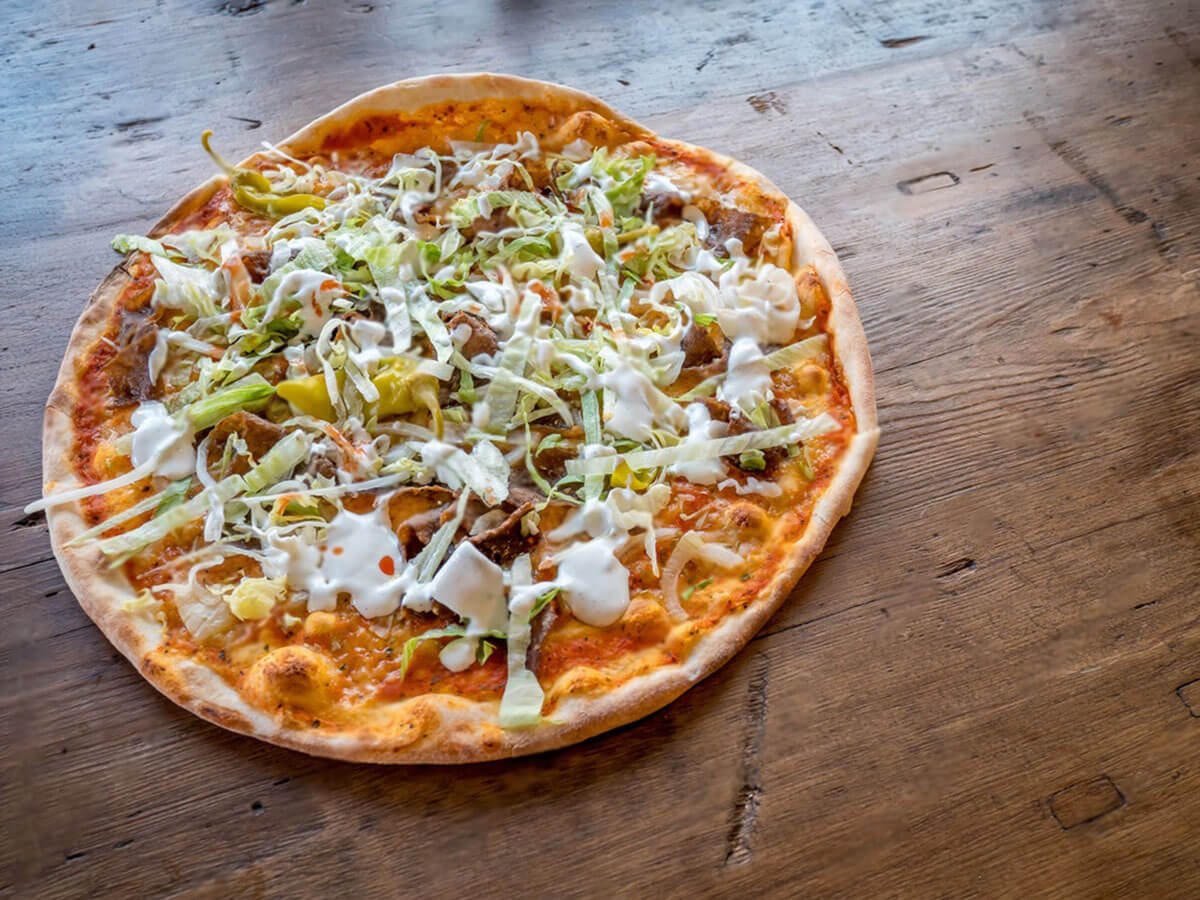Kebab Pizza: Basic Information
Pronunciation
Alternative Name(s)
Dish Type
Course
Mealtime
Popular Variations
- Classic kebab pizza
- Viking kebab pizza
- Fotbollspizza (football pizza)
Kebab Pizza: Ingredients and Preparation
Main Ingredients
Main Cooking Method
Preparation Process
Kebab Pizza: A Deep Dive
Cultural Significance
Taste
Texture
Aroma
Color
Serving Style
Serving Temperature
Accompaniment
Occasions
Seasons
Special Diets
Calories
Popularity
Popular Similar Dishes
- Focaccia
- Piadina
- Garlic fingers
- Pissaladière
- Coca
- Lahmacun
- Pastrmalija
Popular Dining Area
Kebab pizza, or kebabpizza, is a renowned Swedish pizza variety consisting of pizza dough, kebab (grilled meat), and various toppings and condiments. It is an innovative fusion dish combining Italian, Middle Eastern, and Balkan cuisines.
Many Swedes enjoy kebab pizza as a street food, comfort food, fast food, and hangover cure, especially on New Year’s Day. This fusion dish is considered one of the most popular dishes in Sweden.
Does the concept of kebab pizza pique your curiosity? Stick around for more amazing facts about it, like how it came to life, how many variations there are, and what Swedes and people around the world think about it. I will also tell you about kebab pizza’s pros and cons, as well as the common queries people have about it.
Key Points
Kebab Pizza Images
What Is the History of Kebab Pizza?
The history of kebab pizza is a story of how different cuisines mingled in Sweden.
In the 1940s, Italian immigrants opened pizzerias in the Scandinavian country, introducing locals to classic Italian pizzas. But Italians eventually stopped migrating to Sweden, while more and more people from the Middle East moved to the country and took up pizza-making.
By the 1980s, Swedish pizza restaurants usually offered Middle Eastern specialties, especially kebab. The first recorded combination of pizza and kebab occurred in 1986 in Stockholm, and the new dish gradually gained fame.
In the 1990s, Balkan immigrants played an important role in the development of kebab pizza by introducing the pizza salad made from marinated cabbage. Nowadays, pre-made kebab pizza is widely sold in many Swedish supermarkets.
Besides its colorful history, this wonderful fusion dish is also known for being available in many versions that suit various preferences.
What Are Popular Kebab Pizza Variations?
There are 3 well-known kebab pizza variations in Sweden, each with its own set of ingredients and characteristics:

Classic Kebab Pizza
Served as whole, unsliced pies with french fries and pizza salads at restaurants
Has many optional ingredients: curry, bananas, peanuts, bearnaise sauce, etc.

Viking Kebab Pizza
Has the shape of a Viking ship

Fotbollspizza (football pizza)
Created in 2021 by the Sweden national football team
How Is the Significance of Kebab Pizza in Sweden and Other Countries?
Kebab pizza is one of the most beloved Swedish dishes, which many people consider as iconic as the legendary band ABBA or Midsummer. In 2016, a Swedish politician even proposed creating a national kebab pizza, but his motion failed.
In recent years, this Swedish specialty has made headway in attracting customers in America, Australia, and European countries like Norway, Finland, Denmark, the UK, Spain, etc. Kebab pizza is also present in Italy, though many Italians view it as a deviant from classic pizzas.
The unconventional nature of kebab pizza isn’t its only disadvantage (or advantage). Let’s learn more about the pros and cons of this Swedish specialty!
Pros and Cons of Eating Kebab Pizza
Kebab pizza has the following upsides and downsides.
Pros
Cons
After learning about these upsides and downsides, it’s time to check out popular inquiries that readers usually have about kebab pizza.








Adam Sam
Senior Food and Drink Editor
Expertise
Food Writer & Recipe Developer, Recipe Tester, Bartender, Cooking-video Maker, Editor In Chief
Education
Adam Sam, an experienced food writer and recipe developer, is passionate about blending diverse culinary traditions, national dishes, and innovative beverages, showcasing his proficiency in both traditional and modern recipe testing.
As the Editor-in-Chief, he elevates culinary content from street food to fine dining, focusing on Western cuisine and types of drinks at azcuisines.com, and is professional in creating engaging cooking videos that simplify complex dishes and ingredients.
His passion for food is evident in his writing, where he uniquely merges various cultures, traditions, and contemporary trends, skillfully combining classic recipes with modern cooking methods.